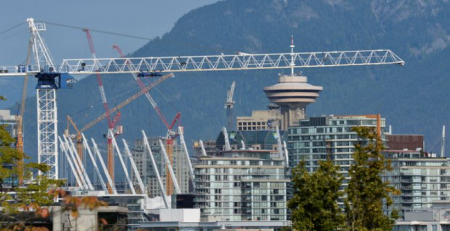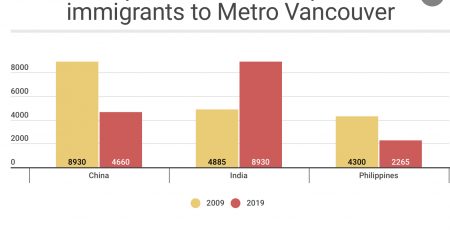Canada’s Housing Market Is Breaking Some Alarming Records Right Now
It’s quiet out there. Maybe too quiet.
Canada’s residential real estate market has slowed considerably over the past year, a fact the industry chalks up to a tough new mortgage stress test and rising interest rates.
This is having an impact on the broader economy. Canada’s GDP growth slowed to a snail’s pace of 0.4 per cent annualized in the fourth quarter of 2018, dragged down in part by falling residential investment, which has slid 7.5 per cent over the past year.
Canada is not alone. Housing markets from New York City to China are slowing, in the face of rising borrowing costs and — in many cases — years of rising prices that have pushed homes out of affordability range for many.
Other factors are playing out worldwide as well, such as the retreat of China’s burgeoning investor class, which has pushed up demand for housing all over the world outside China — maybe nowhere more so than Australia.
There, the housing market is in full-blown correction mode, with prices in Sydney and Melbourne falling at their fastest pace in decades. Experts recently warned the country may be in for its worst housing downturn in 130 years.
So far at least, there are no prognoses that dire for Canada’s housing markets. But we are breaking some multi-decade records these days that suggest this may be more than just a short readjustment to new mortgage policies.
Here are four record-breaking phenomena that suggest we have reached a real turning point in Canadian real estate.
1: For the first time ever, there are fewer mortgages in Canada than a year ago
The Canadian Bankers Association reports there were 4.756 million mortgages on the books of Canada’s 10 largest banks at the end of October, 2018. That’s down 0.3 per cent from the same period a year earlier.
According to data analyst Stephen Punwasi at Better Dwelling, it’s the first time on record that the number of mortgages has declined over a one-year period.
Essentially, old mortgages are coming off the books at Canadian lenders faster than new borrowers are showing up. This is all the more remarkable when you consider that those old mortgages were issued decades ago, when Canada’s population was smaller.
2: Vancouver’s housing market hasn’t been this quiet since 1985
Greater Vancouver clocked 1,484 home sales in February of this year, a nearly 33-per-cent decline from a year earlier and the lowest tally for a February since 1985, according to prominent local realtor and blogger Steve Saretsky. A mere 98 single-family homes changed hands.
This is all the more remarkable when you consider that the region’s population back in 1985 was about three-fifths as large as it is today. On a per capita basis, this might actually be the slowest housing market the city has seen since the Great Depression.
As the country’s least affordable market, Vancouver was always the most exposed to the mortgage stress test and rising interest rates. Couple that with the provincial foreign buyers tax and a new municipal vacant home tax, and you have a recipe for a slowdown.
Not to mention — as the head of the city’s real estate board told HuffPost Canada last year — prices have simply risen too high for local buyers. There’s no one around to buy at these prices.
3: Canadian household debt is growing at the slowest pace in 36 years
The amount of debt Canadians hold has been growing for decades, both in absolute terms and relative to incomes, and this holds true through good times and bad.
So it’s certainly significant that the pace of household debt growth has slowed to its weakest pace since 1983, up 3.1 per cent in January from a year earlier, according to data from the Bank of Canada.
With Canadians carrying the largest debt burden among G7 countries, slowing down the rate of debt growth was one of the goals of the mortgage stress test. On this point at least, we can call the policy a success.
4: Home construction hits a 3-year low, as population growth booms
Home construction in Canada took a 13.6-per-cent dive in February, according to Canada Mortgage and Housing Corp., dropping to an annual pace of around 173,000. That’s the lowest number of housing units to start construction in more than three years.
Developers are clearly spooked by the slowdowns in some of Canada’s largest markets, and have pulled back on new projects.
But that pull-back comes at a time when demand for new homes is accelerating. Faced with a growing labour shortage caused by Canada’s aging population, the federal Liberals bumped up immigration levels to above the 300,000-per-year mark in recent years.
The result is that Canada’s population growth is the fastest in the G7, and the fastest Canada has seen since the 1980s. Greater Toronto alone is seeing its population grow by around 100,000 people per year, explaining why rents and condo prices continue to surge even as affordability hits its worst level in decades.
Between policies encouraging faster population growth and policies encouraging slower house price growth, it’s anyone’s guess how this will play out.











